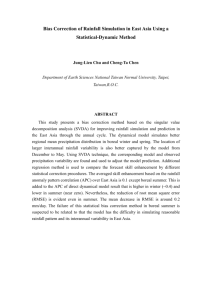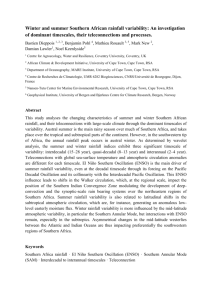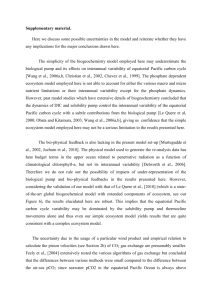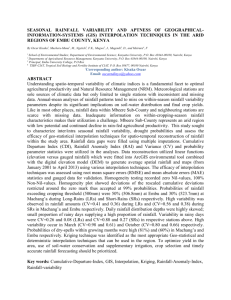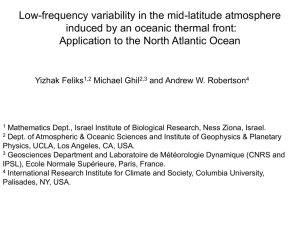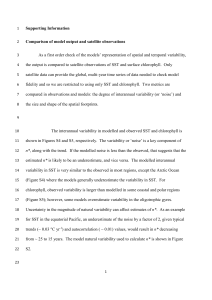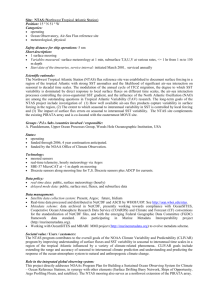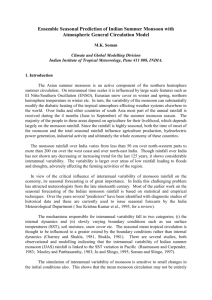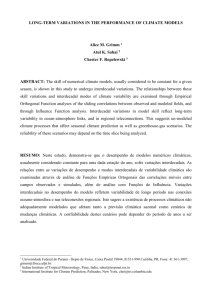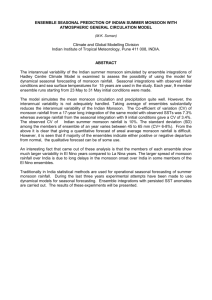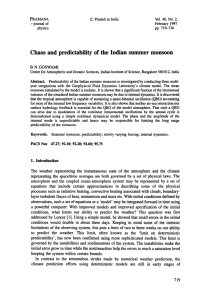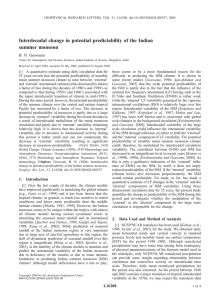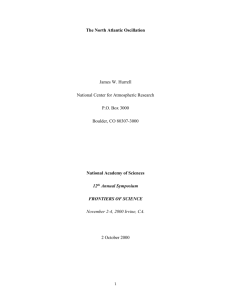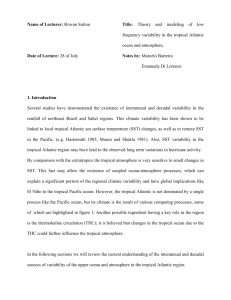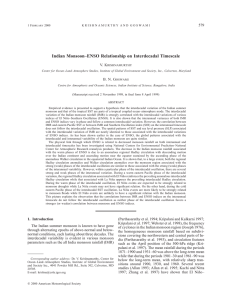10499_Chen-ed_S5hpb
advertisement
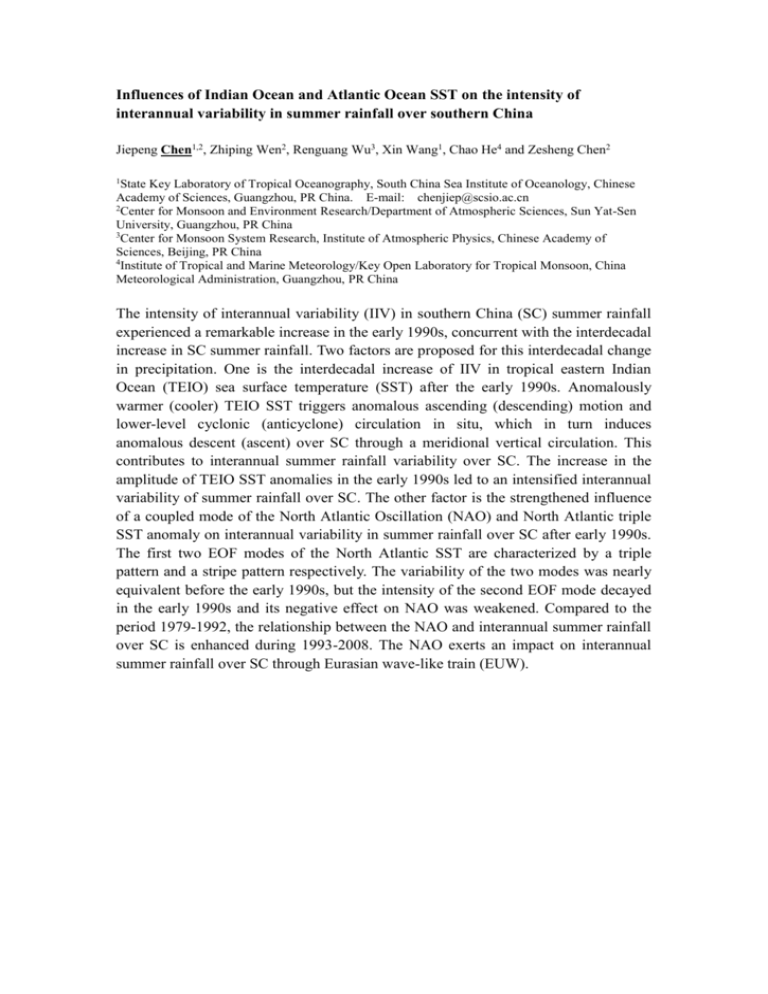
Influences of Indian Ocean and Atlantic Ocean SST on the intensity of interannual variability in summer rainfall over southern China Jiepeng Chen1,2, Zhiping Wen2, Renguang Wu3, Xin Wang1, Chao He4 and Zesheng Chen2 1 State Key Laboratory of Tropical Oceanography, South China Sea Institute of Oceanology, Chinese Academy of Sciences, Guangzhou, PR China. E-mail: chenjiep@scsio.ac.cn 2 Center for Monsoon and Environment Research/Department of Atmospheric Sciences, Sun Yat-Sen University, Guangzhou, PR China 3 Center for Monsoon System Research, Institute of Atmospheric Physics, Chinese Academy of Sciences, Beijing, PR China 4 Institute of Tropical and Marine Meteorology/Key Open Laboratory for Tropical Monsoon, China Meteorological Administration, Guangzhou, PR China The intensity of interannual variability (IIV) in southern China (SC) summer rainfall experienced a remarkable increase in the early 1990s, concurrent with the interdecadal increase in SC summer rainfall. Two factors are proposed for this interdecadal change in precipitation. One is the interdecadal increase of IIV in tropical eastern Indian Ocean (TEIO) sea surface temperature (SST) after the early 1990s. Anomalously warmer (cooler) TEIO SST triggers anomalous ascending (descending) motion and lower-level cyclonic (anticyclone) circulation in situ, which in turn induces anomalous descent (ascent) over SC through a meridional vertical circulation. This contributes to interannual summer rainfall variability over SC. The increase in the amplitude of TEIO SST anomalies in the early 1990s led to an intensified interannual variability of summer rainfall over SC. The other factor is the strengthened influence of a coupled mode of the North Atlantic Oscillation (NAO) and North Atlantic triple SST anomaly on interannual variability in summer rainfall over SC after early 1990s. The first two EOF modes of the North Atlantic SST are characterized by a triple pattern and a stripe pattern respectively. The variability of the two modes was nearly equivalent before the early 1990s, but the intensity of the second EOF mode decayed in the early 1990s and its negative effect on NAO was weakened. Compared to the period 1979-1992, the relationship between the NAO and interannual summer rainfall over SC is enhanced during 1993-2008. The NAO exerts an impact on interannual summer rainfall over SC through Eurasian wave-like train (EUW).
